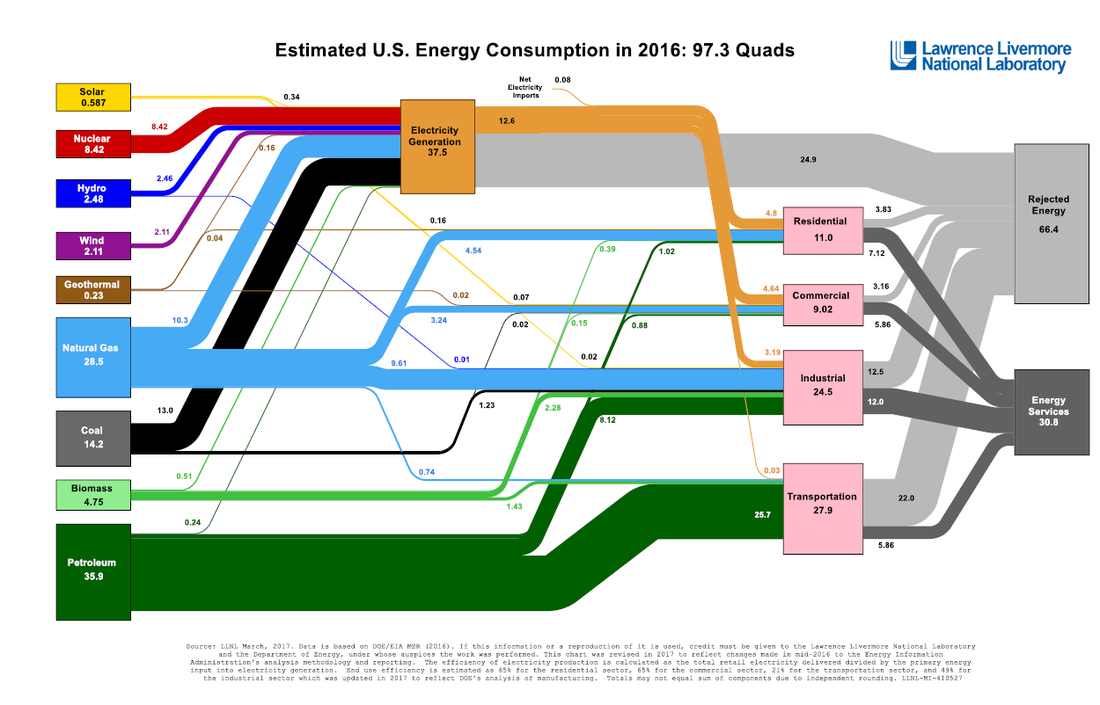|
Lawrence Livermore National Laboratory have published a Sankey Diagram of US energy Consumption for many years. The most recent update shown above is for 2016. This shows the US energy flows in a quantitative manner using the width to show the size of each flow. The boxes are not scaled. To describe what this diagram shows in words would be very verbose and very difficult to understand. It captures a lot of data and presents it in a form that helps in understanding. It shows the sources of energy on the left and the consumers of energy on the right. The extreme right shows the amount of consumption that does useful work and the amount that is rejected through inefficiency.
Even a quick perusal is very informative. The production side is dominated by fossil fuels. Natural gas is now twice as big as coal which has been the biggest change in recent years. The overall system is very inefficient with over two thirds of energy rejected. Electricity generation and transportation are the worst culprits. Solar is still tiny and wind is not much bigger. This diagram only shows the US which is about 20% of world energy. On both a US and a world-wide basis more money is now invested in solar and wind generation than all the other sources of electricity generation combined. This shows that this investment is not supplying a noticeable amount of energy. The purpose of wind and solar is to eventually replace fossil fuels. This chart shows how far we are from achieving that goal. World investment in wind and solar has been a constant $250B for the last five years, half the total investment in generation of about $500B. It is currently on a downswing, dropping 17% in Q1 2017. There is no indication of a likely increase in the near future. Wind and solar economics are steadily improving, but the rate is insufficient to make a dent in the problem they are meant to solve. The emperor has no clothes. StratoSolar could make solar an effective solution that could realistically achieve a fossil fuel free energy system in a timeframe that can limit CO2 to 450 ppm. Current solar will not succeed in a timely enough manner to limit CO2 to acceptable levels. The time for wishful thinking is past. By Edmund Kelly
Comments
|
Archives
December 2023
Categories
All
|
|
© 2024 StratoSolar Inc. All rights reserved.
|
Contact Us
|


 RSS Feed
RSS Feed